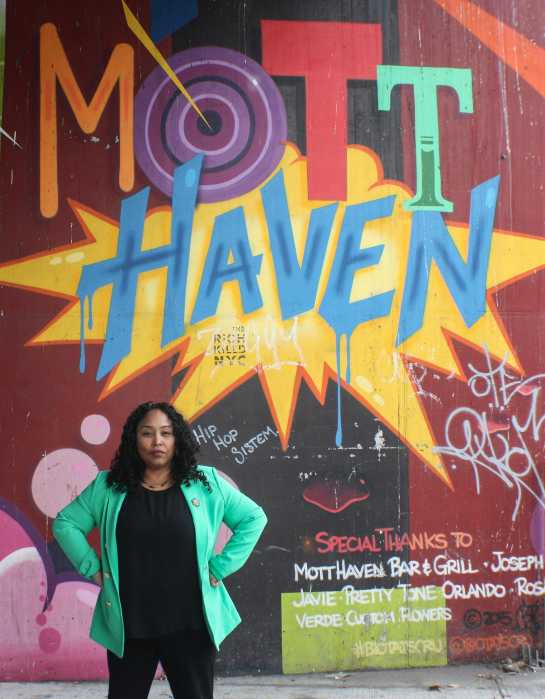By Patrick Hedlund
‘Real’ Resolutions for 2008
After another vigorous year for development in Downtown Manhattan despite the national real estate crisis, prospectors still predict continued growth and express high expectations for the year to come. Mixed Use asked a handful of community representatives — from politicians and powerbrokers to developers and activists — to reflect on the year that was in Downtown real estate and make their resolutions for 2008.
In the Village, monitoring the newly announced St. Vincent’s medical center development will be of paramount importance for Andrew Berman, executive director of the Greenwich Village Society for Historic Preservation. He also cited his organization’s push for a South Village Historic District, capping New York University’s expansion in the Village, and eyeing development work by the New School on 14th St. as crucial to his work in 2008.
Many of Berman’s thoughts were echoed by Community Board 2 chairperson Brad Hoylman, who counted St. Vincent’s, the proposed New School project and the future of Pier 40 as three “very important and unprecedented development projects” of 2008. He also wants to continue reaching out to the Chinatown community in the new year on issues of tenants’ rights as new development continues apace in the historic neighborhood.
Wellington Chen, executive director of the Chinatown Partnership Local Development Corp., agreed that Chinatown is perched at a dubious and “unique position not like any other time in past history” in 2008. He noted that the community needs to seek help from its outside neighbors, as well within its own ranks, to address the future of the rapidly changing landscape.
“Rather than giving us fish all the time, as the bible says, we need to learn how to fish for ourselves,” Chen intimated. “It’s the American way.”
The impending rezoning of the East Village and Lower East Side has Community Board 3 district manager Susan Stetzer looking toward its impacts on the community. She said local residents have expressed eagerness over the city’s forthcoming proposal because “the issues of over-development and the loss of economic diversity are certainly very important to the community.” (The public review process attached to the rezoning proposal is also slated to begin in the new year, according to Department of City Planning spokesperson Rachaele Raynoff, as “the character of these neighborhoods must be acknowledged and preserved.”)
Roberto Ragone, president of the Lower East Side Business Improvement District, also awaits the city’s rezoning plan with the hope that it will encourage more daytime business activity to complement the already teeming nightlife scene. “We want to be known as a mecca for ‘number ones,’” he said of the neighborhood, which he notes currently touts the city’s best knishes, pickles, bagels, donuts and cupcakes at its restaurant offerings.
New York City “Queen of Retail” Faith Hope Consolo said the Lower East Side will remain on its path toward supplanting Chelsea as the city’s premier arts district. But her pick for the neighborhood most likely to break out this year goes to the Financial District, which Consolo believes will be the “new luxe district for ’08,” after major retail signings in 2007 by Tiffany and other high-end restaurants and clothiers. National and international retailers will look to nest Downtown, including many home furnishing and accessory stores, and bank branches. Areas like the Meatpacking District and Astor Place will also thrive, Consolo noted, and “luxury is going to lead the way.”
In Lower Manhattan, Community Board 1 chairperson Julie Menin looks forward to planned development along the East River Waterfront that will create play space for Downtown children, including projects at Burling Slip and the Pearl St. playground. She added that the board also hopes to finish with a comprehensive affordable housing plan for northern Tribeca in 2008 that will “really affect our neighborhood for generations to come.”
The combined power of Lower Manhattan’s strengthening commercial and residential markets will make this an exciting year for Downtown Alliance president Liz Berger. She said the exploding residential market Downtown coupled with a commercial vacancy rate below 6 percent — as well as international retail signings and two more new schools for the community on the drawing board — will only serve to bolster the area’s current resurgence. This year, Berger expects office asking rents to rise above $50 per square foot, sees a surge of hotel rooms in Lower Manhattan, and looks to the increasing vitality of the residential-condo market.
After its own recent renaissance, Hudson Square is primed for an active year after the community worked together to promote the neighborhood as the newest frontier for innovative city planning.
“I think the Hudson Square story’s a big one,” said architect and developer Peter Moore, who led a community-based design charrette to envision the neighborhood’s future. “We’re tantalizingly close to a win-win here, but we must stay focused.” He said the charrette experience proved invaluable for learning the machinations of city agencies and politics, and expects some decisions to be made regarding the planning in the area within the next three to six months.
A huge stakeholder in the neighborhood, Trinity Real Estate will welcome some of its marquee tenants to Hudson Square in the new year, said senior real estate planner Erin Roeder. She counted media companies Viacom and WNYC Radio, and the 92nd Street Y as a few of the major new neighbors to enter the community in 2008.
And with the continued flock to Hudson Square, Roeder is also “looking forward to working with the community to create a much livelier neighborhood that functions for longer hours of the day and has a more active and exciting street life.”
But Downtown also needs to keep an eye on over-development, and Assemblymember Deborah Glick plans to watch that pace closely over the next year. She cited development that appears out of character with the community — like the Trump Soho hotel-condo, and other projects that “stand out in…an unpleasant fashion” — as reasons to strike out against Downtown’s changing skyline.
“My hope would be that the overdevelopment boom that is slowly destroying the character of Downtown will slow down,” Glick said, “if not come to a grinding halt.”
She noted that with the impending departure of Deputy Mayor Dan Doctoroff, it might stem the administration’s penchant for sweeping development.
For tenant activist Doris Diether, she’ll be focused on the grassroots causes of tenant protection and landlord harassment for rent-stabilized residents in 2008. “I wish they would stop picking on rent-controlled tenants,” said the Village resident. “We need low-income people in the city… who obviously can’t afford the kind of rents they’re charging in the new buildings.”
That idea might not totally jibe with Consolo’s view of the uber-luxurious Manhattan she foresees, but 2008 should at least provide some answers — and certainly a lot more questions — for Mixed Use to mull in the ever-changing world of Downtown.
mixeduse@communitymediallc.com


























